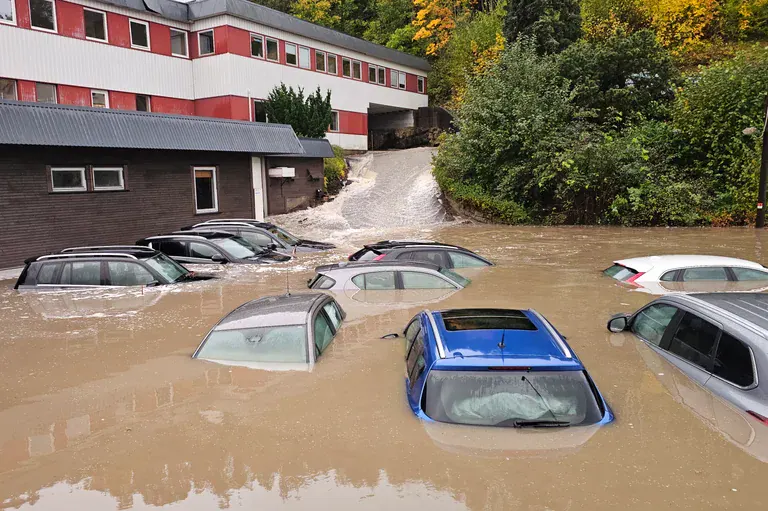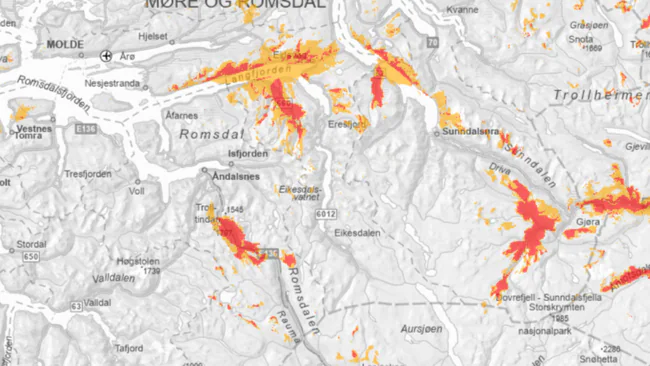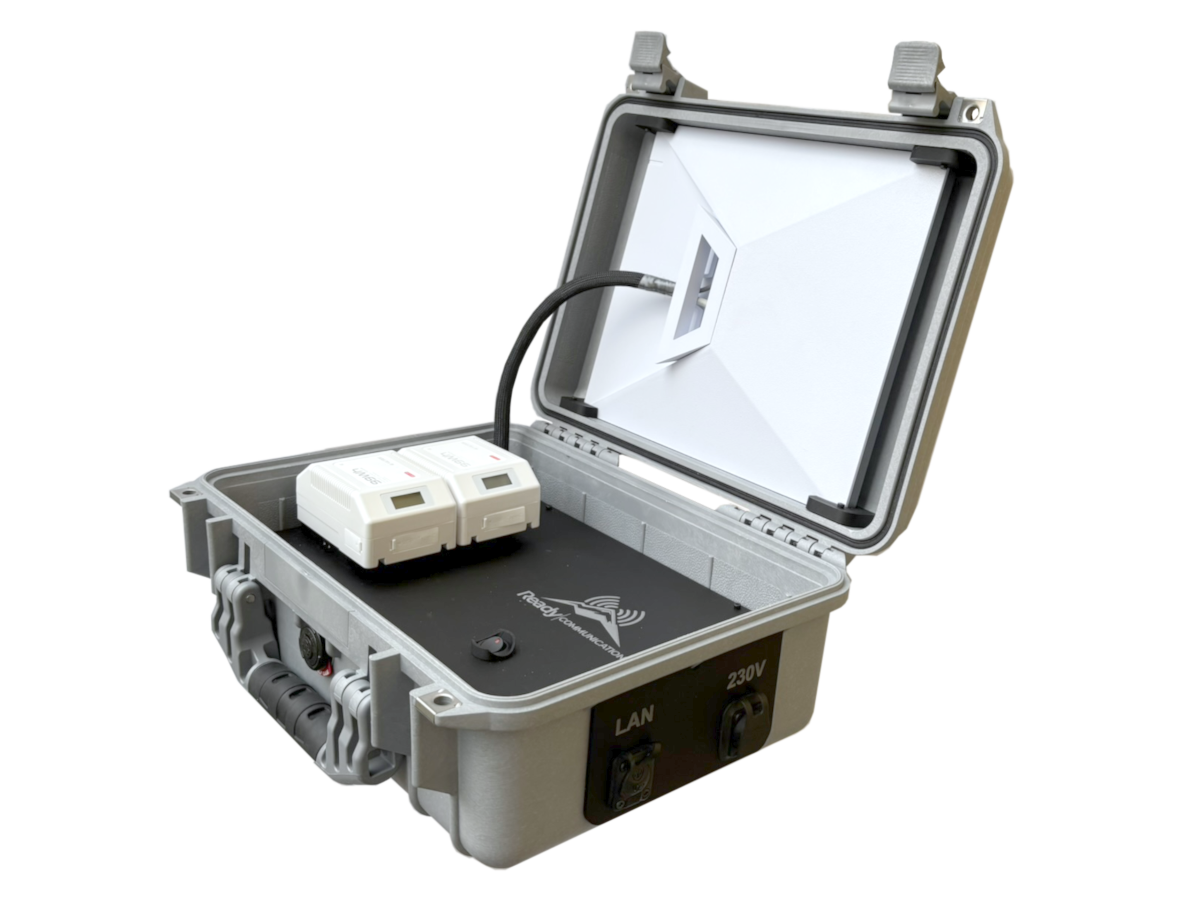
Storm Amy: When Communication Infrastructure Fails
Storm Amy has exposed significant vulnerabilities in Norway's communication infrastructure, leaving thousands without power and mobile connectivity across multiple counties in southern Norway.
Oslo, 07.10.2025 - As of Sunday morning, utility companies reported that over 40,000 people remain without electricity following Storm Amy's impact on southern Norway, a substantial decrease from the 100,000 reported Saturday evening. However, the full extent of the damage is still being assessed, and recovery efforts are expected to take several days.
Widespread Communication Disruptions
Beyond power outages, Storm Amy has caused extensive disruptions to mobile networks and internet connectivity across southern Norway. According to the Norwegian Communications Authority (NKOM), communication infrastructure failures are heavily affecting counties along the south-western coast, with the most severe impacts in Trøndelag, Telemark, Agder, Møre og Romsdal, Rogaland, and Vestland.
As of 14:00 CET Sunday, large areas remain without mobile network coverage and internet access. The situation is expected to worsen as backup power systems at base stations become depleted. Rural areas and cities alike have been affected, demonstrating that no region is immune to infrastructure failures during extreme weather events.

Critical Infrastructure at Risk
Perhaps most concerning was the failure of Norway's emergency communications network (nødnett) in parts of the country. As reported by NRK, Tynset and surrounding areas in Nord-Østerdal lost access to the emergency network for over 24 hours.
This forced first responders to coordinate operations through physical meetings rather than digital communications, resulting in inefficient coordination and potentially putting lives at risk. As Finn Hilmarsen, police station chief at Tynset, noted, the situation has given emergency services "much to think about" regarding communication resilience.
The incident underscores a critical vulnerability: Norway's increasing reliance on terrestrial mobile networks and internet infrastructure that, while effective under normal conditions, can fail catastrophically during extreme weather events.
Coordinated Response Efforts
Despite the challenging conditions, the response to Storm Amy has demonstrated the importance of preparedness and coordination. Multiple organizations have mobilized to support affected areas:
- Direktoratet for samfunnssikkerhet og beredskap (DSB) has deployed mobile base stations to restore connectivity in critical areas
- Norwegian People's Aid (Norsk Folkehjelp) has deployed mobile communication stations and personnel to affected regions
- Civil defense forces have been activated to clear debris and support emergency services
- Communication providers are working around the clock to restore services
Ready Communication solutions have also been successfully deployed at various locations throughout southern Norway, providing backup connectivity where other infrastructure has failed.
The Reality of Infrastructure Vulnerability
Storm Amy has revealed what many preparedness experts have warned: modern society's increasing dependence on digital communication creates significant vulnerabilities when that infrastructure fails. Organizations and emergency services that operate effectively during drills and normal conditions can find themselves unable to function when networks go down.
According to NKOM's ongoing updates, restoration of nominal operations for mobile networks and power infrastructure is expected to take several days. This extended recovery period highlights the need for robust backup systems that don't rely solely on terrestrial infrastructure.
Lessons for Organizational Preparedness
The widespread communication failures during Storm Amy reinforce the critical importance of redundant communication systems, particularly for organizations providing essential services. As we explored in our recent article on How Ready Communication Reduces Risk, having backup communication capabilities is essential for maintaining operations during infrastructure failures or where no infrastructure is available.
Key takeaways from Storm Amy:
- Terrestrial networks are vulnerable: Mobile networks and fixed broadband depend on power and physical infrastructure that extreme weather can disable
- Emergency networks aren't immune: Even dedicated emergency communication systems can fail without adequate backup power and redundancy
- Recovery takes time: Organizations without backup systems may face days of disrupted operations
- Satellite-based systems provide independence: Communication solutions that don't rely on terrestrial infrastructure maintain connectivity when traditional networks fail

Building Resilience for Future Events
Climate scientists predict that extreme weather events like Storm Amy will become more frequent and severe. Organizations across all sectors must assess their communication resilience and implement backup systems that ensure continuity of operations during infrastructure failures.
NKOM has issued five key preparedness recommendations for organizations and individuals:
- Keep devices charged: Maintain power in mobile phones, laptops, tablets, and power banks
- Choose diverse operators: Households and organizations should use different mobile operators to maintain coverage if one network fail
- Have battery-powered DAB radio: Ensure access to information when digital communications fail
- Use WiFi for calls: Most smartphones can make calls over WiFi when mobile networks are down
- Know your emergency coverage locations: Many municipalities have base stations with backup power near municipal buildings
For organizations with critical communication requirements, these individual measures must be supplemented with professional backup communication systems that provide reliable connectivity independent of local infrastructure.
Ready Communication's Role
Our mission is to ensure organizations maintain connectivity regardless of circumstances. During Storm Amy, our satellite-based communication solutions like Garm and Fenrisulfr have provided essential backup connectivity in affected areas, enabling organizations to continue operations and coordinate response efforts when traditional networks failed.
These deployments validate our approach: when communication is mission-critical, organizations need systems that operate independently of vulnerable terrestrial infrastructure. Our solutions combine satellite connectivity with cellular technology, automatically switching between networks to maintain continuous operation even during widespread infrastructure failures.
Moving Forward
As recovery efforts continue across southern Norway, Storm Amy serves as a stark reminder that communication infrastructure failures aren't hypothetical scenarios—they're real events that can affect any region, any organization, at any time.
The question facing every organization isn't whether another extreme weather event will occur, but when. Those with robust backup communication systems will maintain operations and serve their communities. Those without will face the same challenges we're witnessing across southern Norway today.
We encourage all organizations to assess their communication resilience and consider whether their current systems would continue functioning if terrestrial infrastructure failed for several days. For many, Storm Amy provides the wake-up call needed to implement meaningful backup systems.
Ongoing Situation
NKOM continues to provide regular updates on the communication infrastructure situation. As of Sunday afternoon, restoration efforts are progressing, though significant challenges remain in the most heavily affected areas.
Ready Communication will continue supporting response efforts and remains available to organizations seeking to strengthen their communication resilience in light of lessons learned from Storm Amy.
Discussion and Support
If Storm Amy has highlighted communication vulnerabilities in your organization, we welcome the opportunity to discuss how satellite-based backup systems can provide the resilience you need. Whether you're in emergency services, critical infrastructure, or any sector where communication is essential, we're here to help ensure you stay connected when it matters most.
For more information about building communication resilience:
Alexander Haugerud
alexander.haugerud@readycommunication.no
or hello@readycommunication.no
+47 47 277 100
readycommunication.no
You can also contact our partners at TC Connect AS for additional support and regional services.
Our mission is to keep you connected. Let's discuss how we can help.
Stay Ready.
Pressekontakt
Alexander Haugerud
alexander.haugerud@readycommunication.no
+47 47 277 100